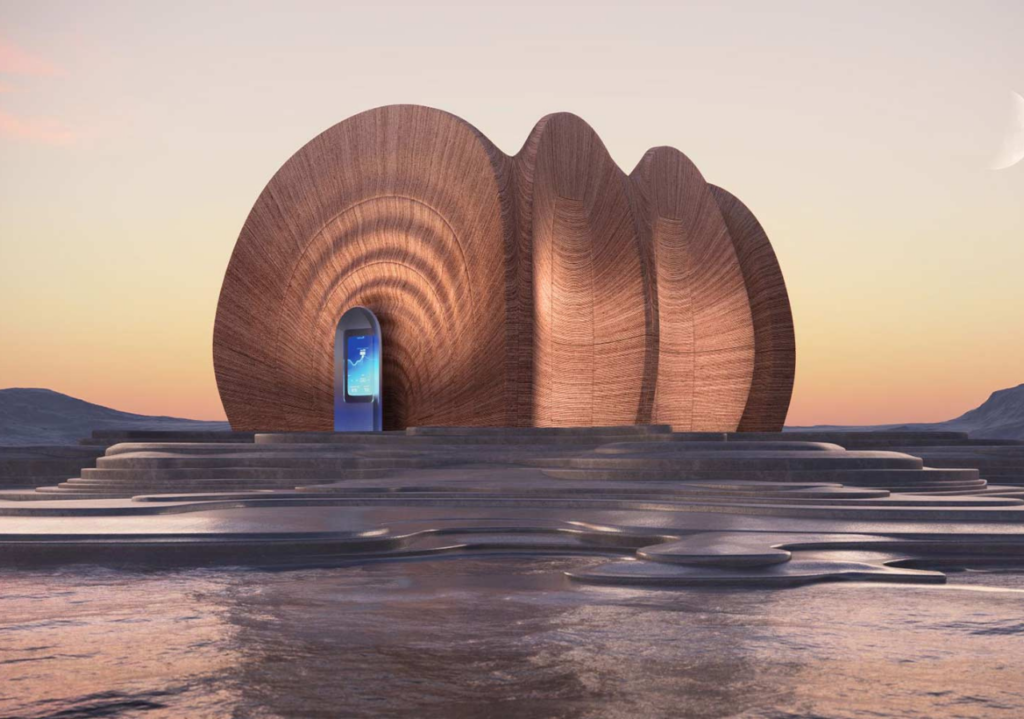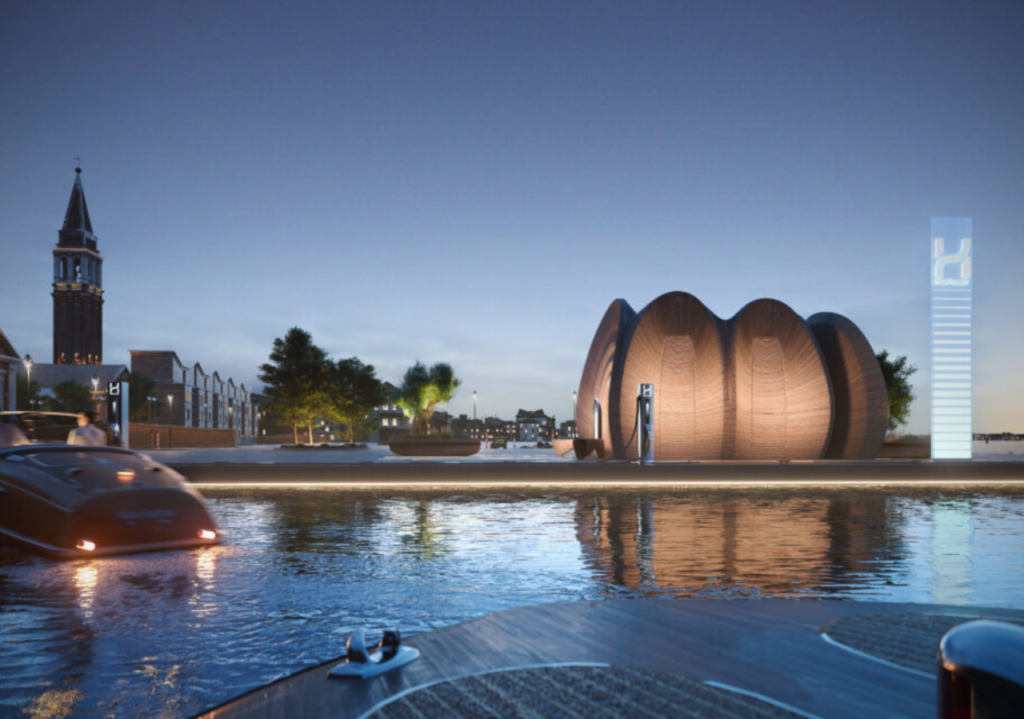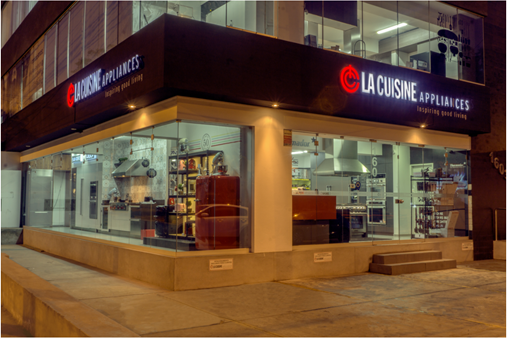
Our Company
Locations
Contact Us
Newsletter
Sign up to receive email updates on the latest products, collections and campaigns.

In a groundbreaking proposal for sustainability, British firm Zaha Hadid Architects (ZHA) is shaping the future of maritime shipping in Italy. The firm is designing 100 green hydrogen refueling stations in Italian marinas for NatPower, an energy company, marking the “world’s first green hydrogen refueling infrastructures.”
Intended for recreational boats, these refueling stations, created by ZHA, will supply green hydrogen, a type of hydrogen produced using renewable energy. With the installation of the first station this summer, the project contemplates building 100 of these stations in 25 Italian marinas and ports by 2030. These will require an investment of 100 million euros to be managed by NatPower H, a division of NatPower.
For a greener future
These refueling stations are part of an effort to encourage the adoption of green hydrogen-powered boats for short trips. Hydrogen can be used to generate electric power in a fuel cell, emitting only water vapor and hot air. The aim, in this regard, is to reduce the use of polluting combustion engines.
According to ZHA’s press release, these 100 stations could eliminate approximately 45,000 tons of greenhouse gas emissions from recreational boating in the area each year.

Use of low-carbon concrete
Each station will be divided into eight curved bays and will be built from 3D-printed concrete blocks, with a layered composition designed to reflect geometries present in marine life. These 50-square-meter stations will be fully recyclable and built from dry-assembled sections to minimize construction waste.
“Built with low-carbon concrete, the structural strength of ZHA’s hydrogen refueling stations is generated through geometry rather than greater use of materials,” explained Filippo Innocenti, Director of Zaha Hadid Architects. “Integrating the latest innovations in construction techniques with historical engineering developed in the Mediterranean by the Romans more than 2,000 years ago, the stations use advanced circular construction technologies, reflecting NatPower H’s commitment to an ecologically responsible future.”
This design follows research conducted by ZHA’s Computation and Design Research Group (ZHA Code) on masonry structures, 3D printed concrete, and sustainable digital concrete construction, developed in conjunction with Block Research Group and Incremental3D.
Projects like this demonstrate the active role that architecture and technology can play in promoting a more sustainable and environmentally friendly future.

Sign up to receive email updates on the latest products, collections and campaigns.
Carrera 9 Nº80-45
Bogotá D.C., Colombia
Monday to Friday: 11:00 a.m. - 07:00 p.m.
Saturday: 11:00 a.m. - 06:00 p.m.
(+571) 432.7408/7493

Calle 77 #72-37
Barranquilla, Colombia
Monday to Friday: 08:00 a.m. - 06:00 p.m.
Saturday: 09:00 a.m. - 01:00 p.m.
(+57) 605 352 0851

Edificio La Cuisine
Costado Suroeste, C.C. La Paco
Escazú, Costa Rica
Monday to Friday: 09:00 a.m. - 05:00 p.m.
Saturday: 10:00 a.m. - 04:00 p.m.
(+506) 4000.3555

Galerías de Puntacana No. 51
Punta Cana, La Altagracia, R.D.
Monday to Friday: 09:00 a.m. - 06:00 p.m.
Saturday: 10:00 a.m. - 01:00 p.m.
(809) 378.9999

C/Rafael Augusto Sánchez No.22,
Piantini, Santo Domingo, R.D.
Monday to Friday: 09:00 a.m. - 06:00 p.m.
Saturday: 09:00 a.m. - 01:00 p.m.
(809) 378.9999

18187 Biscayne Bvld., Aventura
FL 33160
Monday to Friday: 10:00 a.m. - 06:00 p.m.
Saturdays by appointment.
(786) 322 5432
www.lacuisineappliances.com
sales@lacuisineappliances.com

3232 Coral Way,
Miami FL 33145
Monday to Friday: 10:00 a.m. - 06:00 p.m.
Saturday: 10:00 a.m. - 03:00 p.m
(305) 442-9006
www.lacuisineappliances.com

2005 NW 115th Avenue
Miami, FL 33172
Monday to Friday: 09:00 a.m. - 05:30 p.m.
Saturday: Closed
(+1) 305 418.0010
info@lacuisineinternational.com

Obarrio. Av. Samuel Lewis,
Addison House Plaza,
Local No.11, Panamá
Monday to Friday: 09:00 a.m. - 06:00 p.m.
Saturday: 10:00 a.m. - 04:00 p.m.
(+507) 265.2546/2547

Av. Caminos del Inca 1603,
Santiago de Surco, Perú
Monday to Friday: 10:00 a.m. – 07:00 p.m.
Saturday: 10:00 a.m. – 01:00 p.m.
(+511) 637.7087

Centro Comercial San Ignacio, Nivel C, local No.5
Caracas, Venezuela
Monday to Saturday: 10:00 a.m. – 07:00 p.m.
(+58) 212 264.5252
(+58) 414 018.5352 (Wholesale)
ventas@lacuisineappliances.com

Complejo Pradera Ofibodegas No.13,
20 calle final Z. 10 Km. 6.8 Carretera a Muxbal,
Santa Catarina Pínula, Guatemala
Monday to Friday: 08:00 a.m. - 05:30 p.m.
Saturday: 09:00 a.m. - 12:30 p.m.
(+502) 6671-3400
